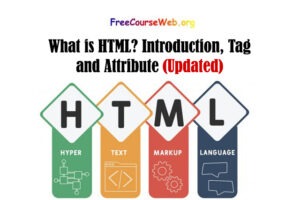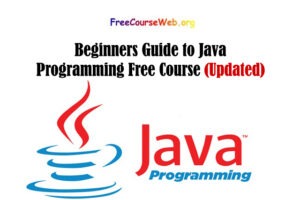PHP (Hypertext Preprocessor) and MySQL are a powerful combination for building dynamic …
And interactive web applications. Let’s discuss their concepts, features, and importance.
PHP (Hypertext Preprocessor):
1. Server-Side Scripting Language:
PHP is a server-side scripting language, meaning it is executed on the server rather than on the client’s browser. It allows the server to generate dynamic web pages and interact with databases.
2. Open Source:
PHP is open-source, which means its source code is freely available. This has contributed to its widespread adoption and a large community of developers.
3. Embeddable in HTML:
PHP code can be embedded within HTML, making it easy to mix dynamic content with static content in web pages.
4. Platform Independence:
PHP is platform-independent, meaning it can run on various operating systems, including Windows, Linux, and macOS.
5. Extensive Library Support:
PHP has a vast collection of libraries and frameworks that simplify and accelerate the development of web applications.
What is PHP? Advantages & Disadvantages
Learn Infinite Project AJAX MySQL API PHP jQuery
What is PHP? Basic to Advance Free Course
Features:
1. Dynamic Typing:
PHP is dynamically typed, allowing variables to change their data type during runtime.
2. Database Integration:
PHP can easily connect to databases, making it a popular choice for building database-driven web applications.
3. Session Management:
PHP supports session management, allowing the creation and management of user sessions for stateful web applications.
4. Security Features:
PHP has built-in security features, and when used correctly, it helps protect against common web vulnerabilities.
MySQL:
Concepts:
1. Relational Database Management System (RDBMS):
MySQL is a popular open-source relational database management system. It organizes data in tables with relationships defined between them.
2. SQL (Structured Query Language):
MySQL uses SQL for defining and manipulating the data. SQL is a powerful language for managing relational databases.
3. ACID Properties:
MySQL ensures data integrity by adhering to ACID properties (Atomicity, Consistency, Isolation, Durability), which guarantees the reliability of transactions.
Features:
1. Scalability:
MySQL is highly scalable, allowing the efficient handling of large amounts of data and high traffic loads.
2. Performance:
MySQL is known for its fast and reliable performance, making it suitable for a wide range of applications.
3. Replication:
MySQL supports replication, enabling the creation of backup servers and improving fault tolerance.
4. Security:
MySQL provides robust security features, including user authentication, encryption, and access controls.
Importance:
1. Web Development:
PHP and MySQL are fundamental for web development, powering many popular content management systems (CMS) like WordPress, Joomla, and Drupal.
2. Dynamic Content:
They enable the creation of dynamic and interactive websites by allowing the integration of server-side logic with databases.
3. Cost-Effective:
Both PHP and MySQL are open source, making them cost-effective choices for small to large-scale web applications.
4. Community and Resources:
The large and active communities around PHP and MySQL mean there are extensive resources, tutorials, and support available for developers.
5. Compatibility:
PHP and MySQL are compatible with various operating systems and are widely supported by hosting providers, making them accessible for developers globally.
FAQ questions:
1. What is the PHP and MySQL?
PHP (Hypertext Preprocessor) is a server-side scripting language used for web development, and MySQL is a popular open-source relational database management system (RDBMS). Together, they are commonly used to create dynamic and database-driven web applications.
2. Is PHP good with MySQL?
Yes, PHP is well-suited for working with MySQL. PHP can connect to MySQL databases, execute queries, and manipulate data, making them a powerful combination for web development.
3. Can I connect MySQL to PHP?
Absolutely. PHP provides built-in functions and extensions (such as MySQLi and PDO) that allow seamless integration with MySQL databases. Developers can establish connections, perform queries, and manage data effectively.
4. What is the use of MySQL?
MySQL is used as a relational database management system (RDBMS) to store and manage structured data. It is commonly employed in web development to handle data for applications ranging from simple websites to complex enterprise systems.
5. What is MySQL full form?
MySQL stands for “My Structured Query Language.”
6. What is MySQL explain?
MySQL is an open-source relational database management system (RDBMS) that uses Structured Query Language (SQL) for managing and manipulating data in a structured manner.
7. What is the full form of PHP?
PHP originally stood for “Personal Home Page,” but it now stands for “Hypertext Preprocessor.” It’s a widely-used server-side scripting language.
8. Is MySQL coding?
MySQL involves writing SQL queries to interact with the database, so in that sense, it involves a form of coding. However, it is not a general-purpose programming language like PHP.
9. Is MySQL a language or software?
MySQL is software, specifically a relational database management system. It uses the SQL language for interacting with databases.
10. What is DBMS?
DBMS stands for “Database Management System.” It is software that provides an interface to interact with databases, ensuring efficient storage, retrieval, and management of data.
11. What is a key in MySQL?
In MySQL, a key is a field or a combination of fields that uniquely identifies a record in a table. Keys are crucial for establishing relationships between tables.
12. What is MySQL for beginners?
MySQL for beginners involves learning the basics of setting up a database, creating tables, inserting data, and performing simple queries. Understanding concepts like primary keys and relationships is also important.
13. What is PHP in programming?
PHP is a server-side scripting language used for web development. It allows developers to embed dynamic content within HTML, interact with databases, and perform various server-side tasks.
Where is MySQL used?
MySQL is used in various applications, from small websites to large-scale enterprise systems. It is a popular choice for web development and is often integrated with PHP, Python, and other server-side languages.
14. What is SQL used for?
SQL (Structured Query Language) is used for managing and manipulating relational databases. It allows users to define, manipulate, and query data stored in a relational database.
15. Is MySQL a tool or skill?
MySQL is a database management system (software), and working with it is a skill. Database administrators and developers often need to have skills in using MySQL to manage and interact with databases effectively.
16. What is the difference between database and MySQL?
A database is a broader term referring to a structured collection of data, while MySQL is a specific relational database management system. MySQL is one of many types of databases.
17. In which language MySQL is written?
MySQL is primarily written in C and C++.
18. What are the 4 types of database?
The four main types of databases are relational databases, NoSQL databases, object-oriented databases, and hierarchical databases.
19. What are the 4 types of DBMS?
The four types of Database Management Systems (DBMS) are hierarchical, network, relational, and object-oriented DBMS.
20. What is DBMS in full word?
DBMS stands for “Database Management System.”
21. What is the full form of SQL?
SQL stands for “Structured Query Language.”
22. How to create a database?
To create a database, you typically use a Database Management System (DBMS) like MySQL. You write SQL commands to define the database structure, create tables, and specify relationships between tables.
23. What are two types of database?
Two broad types of databases are relational databases (e.g., MySQL, PostgreSQL) and NoSQL databases (e.g., MongoDB, Cassandra).




